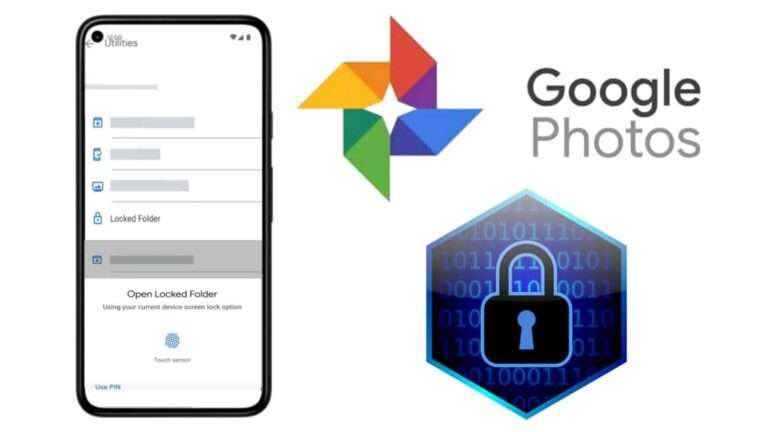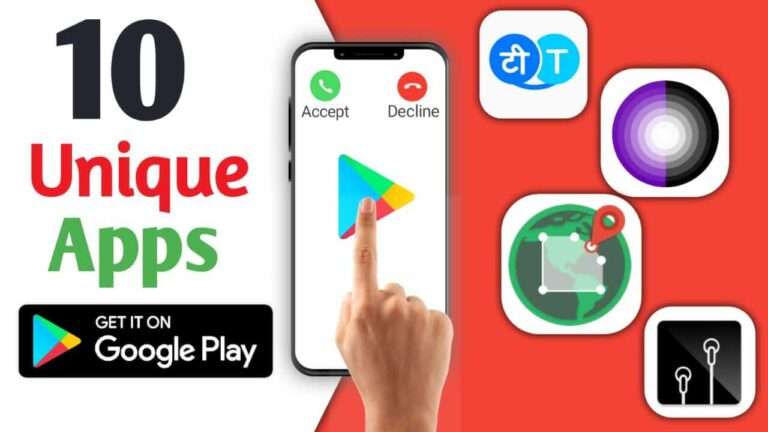Contents
Introduction
Let’s face it: college life can be both exciting and financially draining. Between tuition fees, textbooks, and the occasional pizza binge, cash flow can get tight. But what if I told you that as a college student, you could be making ₹10,000 selling digital products, all in your free time? Sounds like a dream, right? Well, strap in, because we’re diving into how you can turn your skills and creativity into a profitable online venture!
Understanding Digital Products
What are Digital Products?
So, what do we mean by digital products aniuyway? Simply put, these are goods that are sold in a digital format. Think ebooks, online courses, graphics, music, printable planners, and more. They’re all about sharing knowledge or creativity in a way that’s consumable and easy to distribute.
Types of Digital Products College Students Can Sell
For college students, the possibilities are endless! Here are a few ideas to consider:

- 📱Ebooks: Got expertise in a subject? Write a book!
- 👨🎓Online Courses: Teach a skill you know well.
- 🎨Graphic Designs: If you love designing, create templates or social media graphics.
- 📝Printable Materials: Planners, calendars, worksheets—these are hot sellers.
- 📷Stock Photography: Love taking pictures? Sell your snaps!
Why Choose Digital Products?
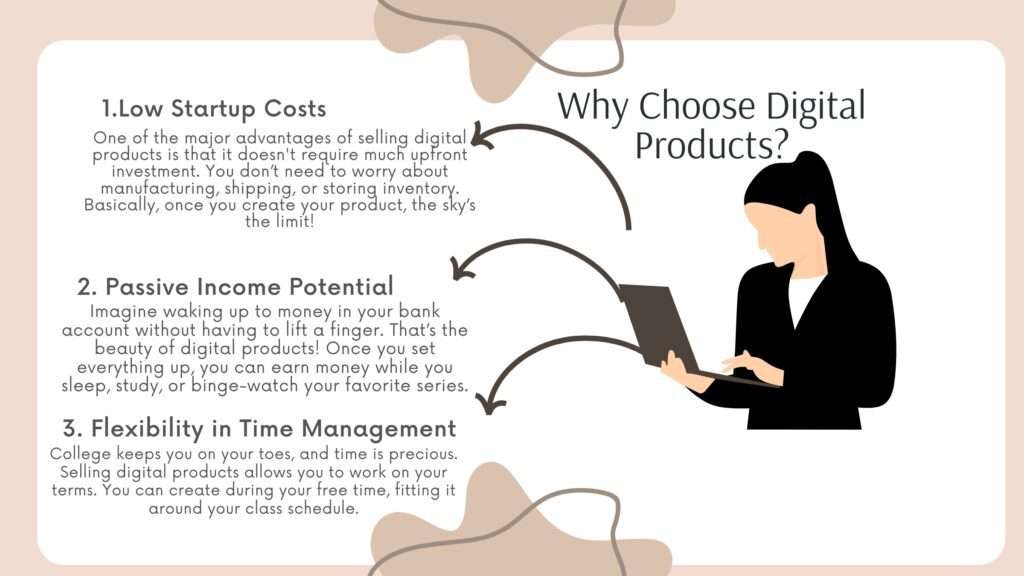
Low Startup Costs
One of the major advantages of selling digital products is that it doesn’t require much upfront investment. You don’t need to worry about manufacturing, shipping, or storing inventory. Basically, once you create your product, the sky’s the limit!
Passive Income Potential

Imagine waking up to money in your bank account without having to lift a finger. That’s the beauty of digital products! Once you set everything up, you can earn money while you sleep, study, or binge-watch your favorite series.
Flexibility in Time Management
College keeps you on your toes, and time is precious. Selling digital products allows you to work on your terms. You can create during your free time, fitting it around your class schedule.
Finding Your Niche
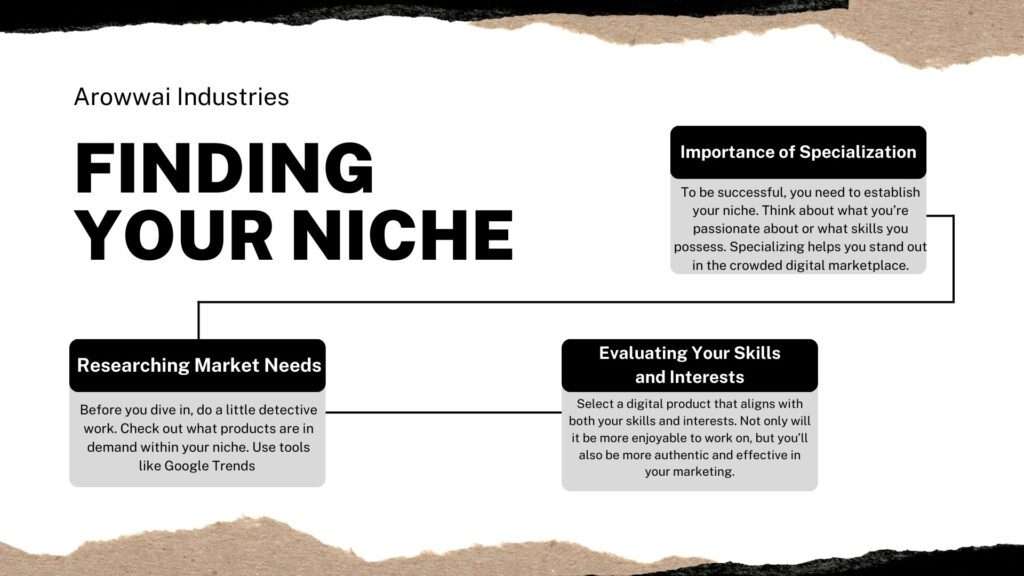
Importance of Specialization
To be successful, you need to establish your niche. Think about what you’re passionate about or what skills you possess. Specializing helps you stand out in the crowded digital marketplace.
Researching Market Needs

Before you dive in, do a little detective work. Check out what products are in demand within your niche. Use tools like Google Trends or social media platforms to gauge what potential customers are looking for.
Evaluating Your Skills and Interests
Select a digital product that aligns with both your skills and interests. Not only will it be more enjoyable to work on, but you’ll also be more authentic and effective in your marketing.
Creating Your Digital Product

Step-by-Step Creation Process
Creating a digital product can feel daunting, but breaking it down into manageable steps can make it easier. Identify your idea, outline your content, and then create it. Don’t forget to have fun along the way!
Utilizing Free Tools for Product Creation
You don’t need to spend a ton of cash on fancy software. Use free tools like Canva for design, Google Docs for writing, and Screencast-O-Matic for video tutorials. There’s a wealth of resources available to help bring your product to life without breaking the bank.
Testing Your Product Before Launch
Before rolling out your product, run a test with a small group to gather feedback. This will help you refine your offering and rectify any issues before it goes live to the public.
Platforms for Selling Digital Products
Popular Platforms for Selling
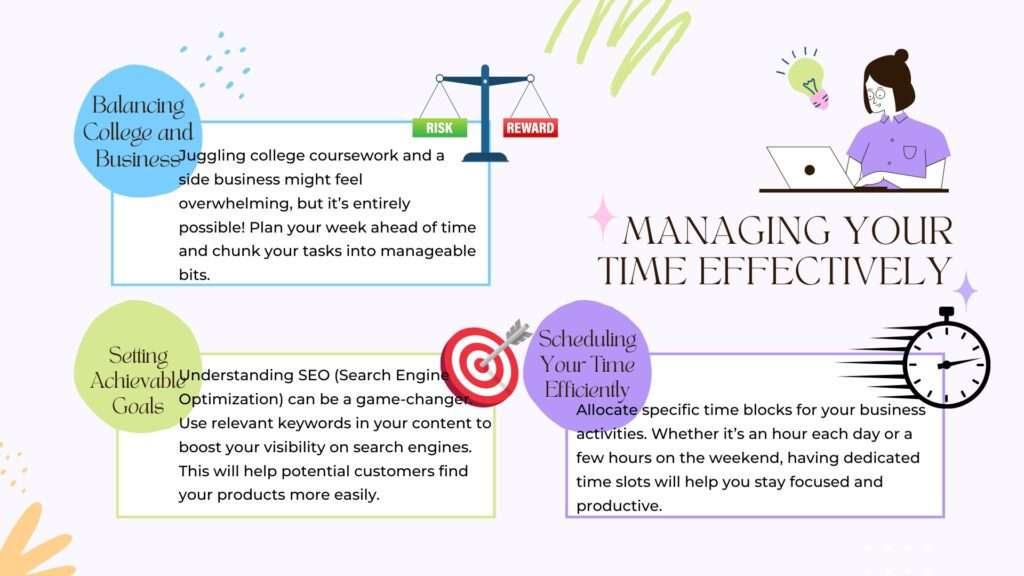
When it comes to selling, you have options! You can choose marketplaces like Etsy, Gumroad, or even set up your own website on platforms like Shopify or WordPress.
Comparison of Alternatives
Each platform has its distinct pros and cons. Etsy can be great for creatives, while Gumroad is simple for selling digital downloads. Research which platform best suits your product and personal style.
Marketing Your Digital Product
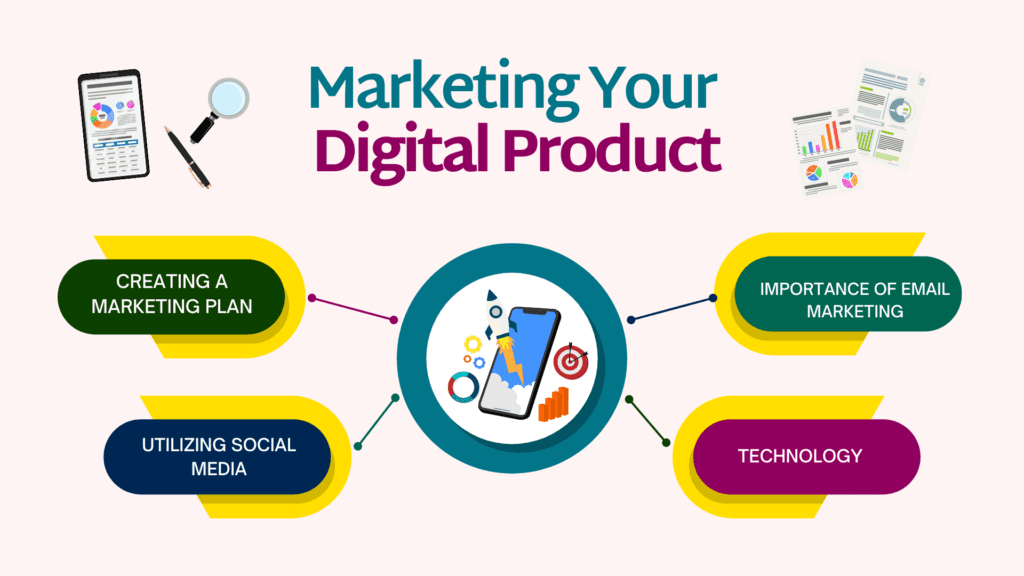
Creating a Marketing Plan
Now that your product is ready to go, let’s talk marketing! Develop a laid-out plan that covers how you intend to promote it. Your strategy might include social media campaigns, email newsletters, and even collaborations with other creators.
Utilizing Social Media

Social media is a fantastic way to generate buzz. Create engaging content to showcase your product, maybe even run contests or giveaways. Platforms like Instagram and TikTok are ideal for visually appealing products.
Importance of Email Marketing
Building an email list is gold. It allows you to retain a loyal audience who are interested in your offerings. Services like Mailchimp can help you manage your list and send out newsletters or promotions.
Setting Your Pricing Strategy
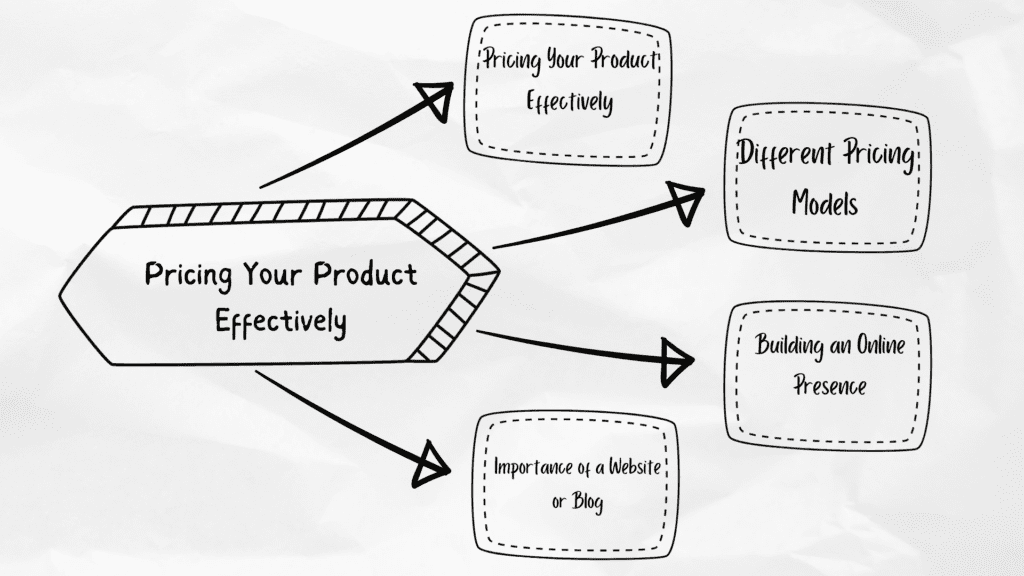
Pricing Your Product Effectively
Finding the right price point can be tricky. You want to ensure your product is valued, but also attractive to buyers. Start by looking at what similar products are priced at, and experiment to see what works best.
How to Test Different Pricing Models
Don’t be afraid to try out different pricing strategies. You could consider introductory pricing to entice first-time buyers or bundle products for a discount. A/B testing can be a valuable strategy here.
Building an Online Presence
Crafting a Professional Brand

Developing a strong brand identity is essential. This includes having a consistent tone, aesthetic, and messaging across all your platforms. A well-crafted brand can create customer loyalty and trust.
Importance of a Website or Blog

Having your own website not only gives you credibility but also a place to showcase your products. You can share blog posts related to your niche, driving traffic and engaging visitors.
Utilizing SEO to Drive Traffic

Understanding SEO (Search Engine Optimization) can be a game-changer. Use relevant keywords in your content to boost your visibility on search engines. This will help potential customers find your products more easily.
Managing Your Time Effectively
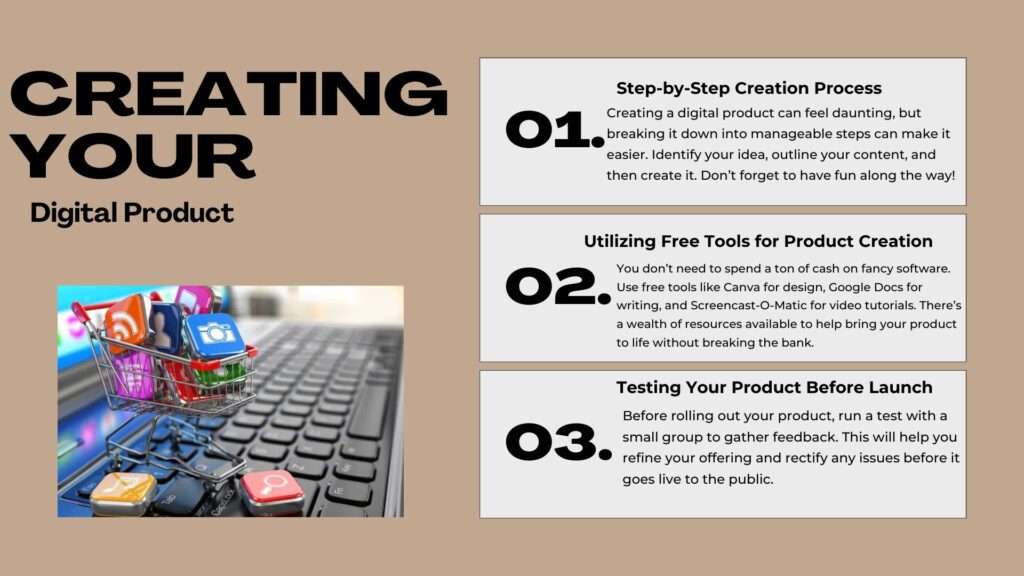
Balancing College and Business
Juggling college coursework and a side business might feel overwhelming, but it’s entirely possible! Plan your week ahead of time and chunk your tasks into manageable bits.
Setting Achievable Goals
Create short-term and long-term goals for your digital product business. Do you want to make ₹10,000 in sales in three months? Jot down steps to reach that milestone and keep track of your progress.
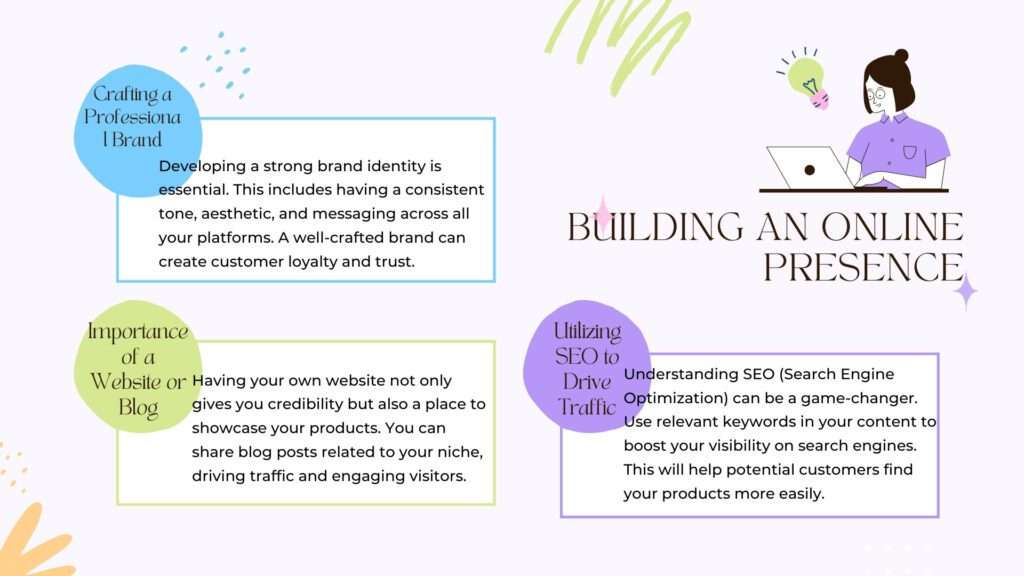
Scheduling Your Time Efficiently
Allocate specific time blocks for your business activities. Whether it’s an hour each day or a few hours on the weekend, having dedicated time slots will help you stay focused and productive.
Handling Customer Interactions
Tips for Great Customer Service
Fantastic customer service is crucial for building trust and loyalty. Respond to queries promptly, be friendly, and make sure your customers feel heard. This can lead to positive reviews and repeat business.
Managing Feedback and Reviews
Feedback, whether good or bad, is valuable. Use it as a learning opportunity to improve your products and services. Engage with happy customers to encourage them to leave glowing reviews!
Expanding Your Product Line
How to Create Additional Products
Once you find success with one product, why stop there? Consider developing additional related products or expanding into new niches. This can lead to more income streams and a broader audience.
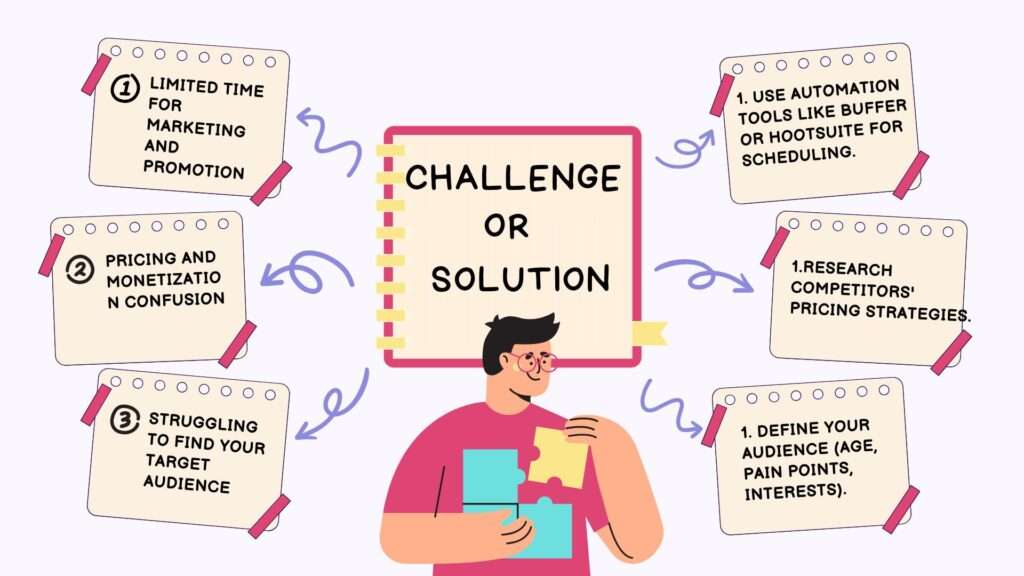
| Challenge | Solution |
|---|---|
| Limited Time for Marketing and Promotion | 1. Use automation tools like Buffer or Hootsuite for scheduling. 2. Focus on key platforms where your audience is active. 3. Repurpose content. |
| Pricing and Monetization Confusion | 1.Research competitors’ pricing strategies. 2.Offer tiered plans (e.g., basic, premium). 3.Experiment with discounts or limited-time offers.kl |
| Struggling to Find Your Target Audience | 1. Define your audience (age, pain points, interests). 2. Use tools like Google Analytics or Facebook Insights. 3. Engage in niche communities. |
Upselling and Cross-Selling Strategies
Utilize upselling and cross-selling techniques to increase sales. If a customer buys one product, tempt them with related products that enhance their purchase.
Leveraging Passive Income Streams
Benefits of Passive Income
Creating a steady income stream without constant effort is the ultimate goal. Passive income allows you to earn while focusing on your studies or hobbies, striking the perfect balance.
How to Automate Your Sales Process
Look for ways to automate your sales process, whether it’s through marketing software, automated emails, or using platforms that handle transactions for you. The less you have to manually handle, the better!
Navigating Obstacles as a Student Entrepreneur
Every journey has its bumps in the road. Being a student entrepreneur can bring unique challenges, but don’t get discouraged! Acknowledge them and develop personalized solutions.
Tips for Overcoming Challenges
Maintain your focus and embrace flexibility. Adjust your strategies if something doesn’t work, and don’t hesitate to seek advice from others who are on the same path.
Conclusion
Alright, folks! Selling digital products as a college student might just be one of the smartest moves you can make. With a little creativity and dedication, you can earn ₹10,000 or more while flexibly managing your schedule. From finding your niche to efficiently marketing your products, the journey can be both exciting and rewarding. So, what are you waiting for? Dive in, tap into your skills, and make that extra cash flow!
FAQs
1. What are the best digital products to sell as a college student?
Some popular options include ebooks, online courses, printables, and graphic designs.
2. How much can I realistically earn from selling digital products?
This varies widely based on your product, marketing efforts, and niche. Many students aim for ₹10,000 or more monthly.
3. Do I need a website to start selling digital products?
While a website can enhance credibility, it’s not an absolute requirement. You can start selling on platforms like Etsy or Gumroad if you’re just getting started.
4. How do I find my niche for digital products?
Consider your skills, interests, and market demand. Research what products are currently popular or look for gaps in the market.
5. What are effective marketing strategies for digital products?
Social media marketing, content marketing via blogs, email campaigns, and collaborations with influencers are all effective strategies to promote your digital products.




